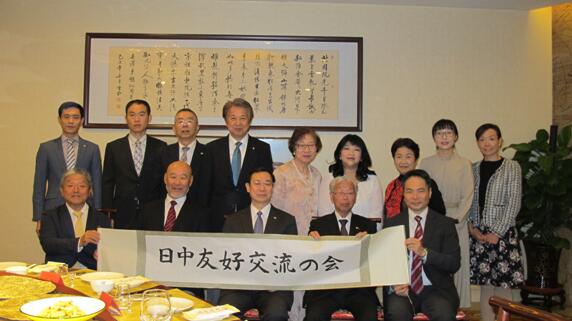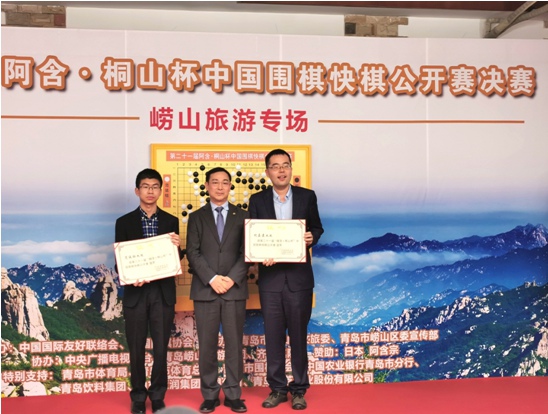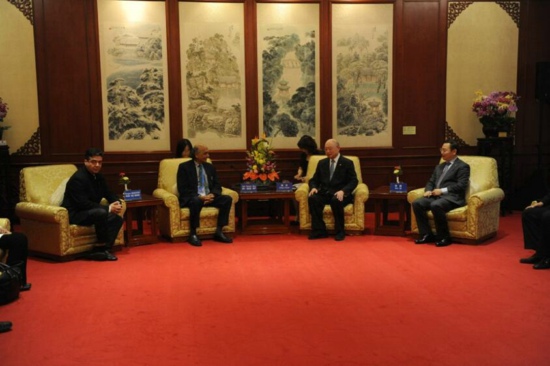The “Indo-Pacific Strategy” of the Trump administration is clearly targeted at China, with impacts on China mainly reflected in four aspects.
First, challenges at the military level are more pressing for China. One of the core pillars of the Trump administration’s “Indo-Pacific Strategy” is to increase military input in the Indo-Pacific region, while to prevent against, interrupt and monitor China’s military modernization and maritime rights protection are the focus of the U.S. security strategy toward the region. The report on China’s military strength for 2019 issued by the U.S. pointed out, “China’s military modernization aims at capabilities that may reduce America’s core operational and technological advantages.” For this reason, the Trump administration, on the one hand, has put limits on China’s participation in the US-led international military exchanges, declaring that it would not invite China to the annual RIMPAC military exercise beginning from 2018, which has been institutionalized in its National Defense Authorization Act for FY 2019; while on the other hand, the U.S. has increased the momentum of military operations in areas adjacent to China, such as increasing the frequency of the so-called FONOP in the South China Sea and other sea areas, and holding joint military exercises with countries from the region in disputed sea areas including the South China Sea. In 2017, the U.S. Navy conducted as many as four FONOPs in the South China Sea, exceeding the total number of FONOPs conducted during Obama’s two terms in office. Within 2018, the Trump administration launched five more such operations. On July 9 of 2018, the U.S. held a week long joint military exercise with the Philippines in the South China Sea, with Japan joining in the exercise as an observer; and on August 31 the same year, the USS Ronald Reagan (CVN-76) Strike Group engaged in a bilateral military drill with the Japanese Maritime Self-Defense Force in the South China Sea to raise the seamless fusing ability between the militaries of the two countries.
Meanwhile, the U.S. has stepped up security cooperation with Japan, India and Australia, which is generally believed to be an “anti-China alliance” against the development of the Chinese military forces. The Trump administration will also strengthen security relations with Taiwan, while taking Taiwan as an important tool to check and balance China. The National Defense Authorization Act for FY 2018, the Taiwan Travel Act and the National Defense Authorization Act for FY 2019, passed by the U.S. Congress and signed by President Trump, have involved several clauses that challenge the One-China principle, such as holding joint military exercises with Taiwan, permitting the U.S. warships to pass or stop at Taiwan’s ports, and encouraging high level mutual visits by the U.S. and Taiwan officials. In addition, the frequency of the U.S. warships passing through the Taiwan Strait has substantially increased, as shown in the fact that by last November, the U.S. warships had routinely passed the Taiwan Strait three times, which was never seen in recent years. Moreover, the awareness of the U.S. front-line military commanders to prevent against and confront China has been unified and strengthened. Philip S Davidson, Commander of the U.S. Indo-Pacific Command, said the U.S. Indo-Pacific Command saw confronting the challenges posed by China and Russia as its important priorities. As China is seen as the biggest long-term challenge to the United States, “if the U.S., its allies and partners fail to join hands in confronting China, it will realize its dream of dominating Asia.” He further pointed out, the U.S. “will cooperate with Beijing wherever possible, but has to get ready to respond to China’s challenges whenever necessary”, and claimed that the U.S. Indo-Pacific Command would continue with its allies and partners to set up a more lethal, integrated and interoperable combat force so as to ensure freedom in the air and on the sea. All of these have undoubtedly posed more pressing challenges to China’s military security and protection of its sovereignty.
Second, challenges at the economic level are increasingly prominent for China. This is mainly reflected in the game between the “Indo-Pacific Strategy” of the United States and the “Belt and Road” Initiative proposed by China. In geographical terms, the “Indo-Pacific Strategy” of the United States covers a vast region spanning over the Indian and Pacific Oceans from the west coast of India to the west coast of the United States, which coincides with the region where the development of the “Belt and Road”, especially the “21st Century Maritime Silk Road” concentrates on. In terms of means, the “Indo-Pacific Strategy” has taken investment and financing in the field of infrastructure as its main content, which is also distinctly similar to the goal of infrastructural interconnection and interworking championed by the “Belt and Road” Initiative. On September 10 of 2018, Alice Wells, Principal Deputy Assistant Secretary for South and Central Asian Affairs, expressed that the “Indo-Pacific Strategy” of the United States had offered more alternatives for infrastructural construction and economic development in the region, as “we discussed the Indo-Pacific as an opportunity for the U.S. and India to be able to offer countries alternatives for development, alternatives for how they are going to pursue significant infrastructure projects and how they are going to work to be able to create a free and open trading system that has advanced all the countries of the world since post World War II.” According to the U.S. media reports, the U.S. is planning to set up an International Development Finance Corporation (IDFC) with an intention to make it “an explicit alternative” to the “Belt and Road” Initiative. The American scholar Dan Steinbock also believed the “Indo-Pacific Strategy” of the Trump administration to be an alternative competing with the “Belt and Road” Initiative. For this, the U.S. Vice President Mike Pence shared a similar view when pointing out in his speech delivered to the 2018 APEC Leaders’ Meeting that in financing the infrastructural construction in the Indo-Pacific region, “the U.S. offers a better option….. We will not create a binding zone or a one-way street.” In fact, this competition has already produced certain policy effect. For instance, Malaysia has cancelled three pipeline projects supported by China, in addition to suspending some relevant projects worth US$ 23 billion. At the same time, the Financial Times reported, Prime Minister Mahathir wanted to introduce American capital into Malaysia. More importantly, the “Indo-Pacific Strategy” of the United States has provided a platform to compete with the “Belt and Road” Initiative for the countries in the region. For example, India has occupied a very important position in the construction of the “Belt and Road”. Without the “Indo-Pacific Strategy” of the United States, the possibility of India to participate in the “Belt and Road” Initiative cannot be excluded, despite the fact that India is in suspicion of the “China-Pakistan Economic Corridor”. However, in advancing its “Indo-Pacific Strategy”, the U.S. has attached great strategic importance to India, and strengthened its bilateral ties with India through various means, which has made it easy for India to make strategic options. So to speak, against such a backdrop, the hope that India will participate in the construction of the “Belt and Road” is dimmer, which will also give rise to the risks that the construction of the “Bangladesh-China-India-Myanmar Economic Corridor” would be interrupted.
Third, China’s regional influence is challenged. The countries in the region have generally taken a positive attitude in bringing in outside powers to counterbalance China’s influence in the region, while the Trump administration has taken enhancing American leadership in the Indo-Pacific region as an important goal in advancing its “Indo-Pacific Strategy”. As a result, China’s influence in the region will have to face realistic challenges from the United States. In promoting its “Indo-Pacific Strategy”, the U.S. has reiterated its openness, transparency and sustainability, highlighted the private and commercial nature of the U.S. investment, and emphasized such principles or positions as respecting the national sovereignty and rule of law of the countries in the region. For instance, Mike Pompeo claimed at the 2018 Indo-Pacific Business Forum, “the U.S. is investing into economic partnership rather than political influence”, while emphasizing “the U.S. believes in strategic partnership instead of strategic dependency.” On November 16, the U.S. Vice President Pence also expressed at the 2018 APEC Leaders’ Meeting, “the U.S. will stretch out in a spirit of friendship and partnership without exception to all the countries from Latin America’s west coast to the far end of the Indian Ocean, seeking cooperation instead of control.” Corresponding with it, the U.S. has wasted no efforts to defame China’s “Going Out” economic policy and action as the “neo-imperialism” and “new-colonialism” to the developing countries, while hyping up the so-called “predatory economics” and “debt trap”, with an intention to shape the U.S. as the most dependable partner for stability, development and prosperity in the Indo-Pacific region, and discredit China as a selfish and irresponsible country trying to gain political influence and even control with economic leverage. Obviously, this will exert negative impact on China’s national image and influence in the region.
Fourth, challenges to China at the political security level cannot be ignored. Fundamentally speaking, the accusations and anxiety of the U.S. about China can all be attributed to the confrontation and conflict between the two countries in political system, development path and ideology. One of the important reasons that the Trump administration has redefined China’s national identity and turned to a tougher China policy is that it believes the engagement policy of the United States toward China since the Nixon administration has failed, particularly in shaping China’s development direction and process. The Integrated Country Strategy issued by the State Department of the United States pointed out, while the two countries shared similar interests and engaged in cooperation on multiple international fields in protecting their nationals and preventing nuclear proliferation and epidemics, their core values are sharply conflicting with each other resulting in different or even conflicting interests----from the understanding of the future international order and human right forms to the recognition of the roles of the state and the Communist Party of China in economic activities. The Integrated Country Strategy claimed, the Trump administration will continue to support American values, and called China to respect and comply with the so-called “universal values”. To this end, the Trump administration will integrate cross-departmental strength and resources to strengthen its “endeavor to shape China’s option in a constructive way” together with its allies and partners that share similar values and interests. It can be seen that to change China’s power, institutional and ideological systems remains the fundamental objective of the U.S. strategy toward China, and the indispensible condition for the U.S. to obtain ultimate and absolute security. Given this, the challenges posed by the “Indo-Pacific Strategy” of the Trump administration to China’s political security cannot be ignored or belittled.
Up until now, the “Indo-Pacific Strategy” of the Trump administration has set up its basic framework involving overall objective, major content, policy support and resource guarantee which will be deepened and strengthened in the future. Nevertheless, it is still too early to overstate the prospect and impart of the “Indo-Pacific Strategy”, as its implementation and advance is facing major constraints, including failure to integrate strength and difficulties to implement policies caused by domestic political chaos within the United States, and the countries in the region pursuing policies to seek balance rather than choose side, as well as the negative impact brought about by the Trump administration’s troubled diplomatic front.
From the present stage, although the “Indo-Pacific Strategy” of the Trump administration has formed its basic framework, it is by no means completed, and its relevant policies are not well implemented. To a large extent, it is an inheritance and adjustment of the “Asia-Pacific Rebalancing Strategy” pursued by the Obama administration, as they share more similarities than differences. In terms of strategic objective, it still aims at consolidating the U.S. strategic presence in the region and ensuring its dominance; in terms of strategic intention, it has both geo-political and geo-economic purposes; and in terms of means, the Trump administration has also relied on mobilizing all American strategic resources ---- political, economic, military, diplomatic and cultural ---- to advance its “Indo-Pacific Strategy”, only with different emphasis on each of the policy instruments, and different ways of operating. However, it is certain that the “Indo-Pacific Strategy” of the Trump administration is proposed after the U.S. redefined China’s strategic identity, with a clearer intention to strengthen competition with and prevention against China. Furthermore, as the Trump administration is seeking a “constructive and result-oriented” relationship with China, it has added more uncertainties to the development of the China-U.S. relationship. From this point of view, the “Indo-Pacific Strategy” of the Trump administration is more negative in cognizing and defining its relations with China, putting more emphasis on preventing against and suppressing China, and featuring both pragmatism and aggressiveness.
(The author is Associate Research Fellow from the Institute for International Strategic Studies of the Party School of the Central Committee of CPC (Chinese Academy of Governance) and Guest Research Fellow of CPDS. This article was received on Dec.22, 2018.)




